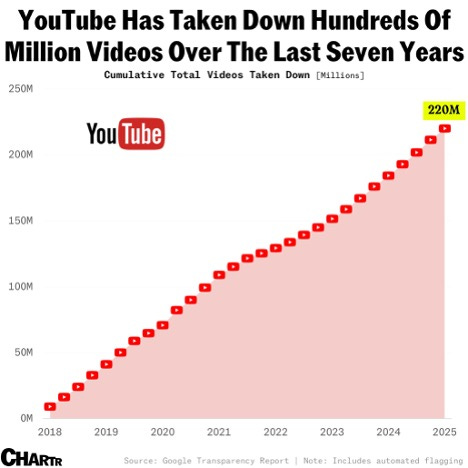12 Things from the week | 14 Jun 25
News from the past week, and a few other things.
World News
1. Israel's overnight strike on Iran in maps and images (BBC)
Israel has hit Iran with its biggest wave of air strikes in years, targeting the country's nuclear programme, and is promising to continue its attacks.
Senior military figures and nuclear scientists were killed in the overnight strikes and there are unconfirmed reports that civilians, including children, were also among the victims. In response, Iran launched about 100 drones towards Israel, most of which were intercepted, according to the Israeli military.
Israel said it had launched a another wave of strikes on Friday evening, with reports of more explosions in Iran, but the scale of that attack and the damage caused is not yet clear.
NOTE: Speaking of Iran, there’s also this going on:
2. ‘Dog Walking Is a Clear Crime’: Iran’s Latest Morality Push (NYT)
When Iran banned dog walking in 2019, few dog owners were all that worried about the order. But after years of lax enforcement, officials in recent days have pledged to crack down, according to the state news media.
Prosecutors in at least 20 cities cited public health risks and threats to public safety in announcing the heightened enforcement of the bans, which include both dog walking and driving with dogs.
“Dog walking is a clear crime,” Mohammad Hossein Doroudi, the prosecutor in Mashhad, told reporters on Monday as he announced that city’s plan, according to IRNA, a state-owned news outlet.
Iran’s government has also long seen pet dogs as a sign of Western cultural influence. And much of the opposition to dogs in Iran stems from religious beliefs, with dogs considered to be “najes,” or impure, in Islam.
Ayatollah Ali Khamenei, Iran’s supreme leader, had issued a fatwa, or religious order, explaining the logic: A dog’s saliva or hair would render anything it touched — like a person, clothing or a surface — impure.
“Prayer is invalid with the presence of dog hair,” his fatwa read.
Economy
3. How the U.S. Government Borrows to Fund Its Massive Budget Shortfall (WSJ)
The U.S. government’s growing debt is raising alarm among top financial leaders, who warn of significant economic risks if the trend continues. With spending far outpacing revenue, the government is relying heavily on borrowing—primarily through the issuance of Treasury securities—to cover budget deficits. In 2024 alone, the federal deficit reached $1.8 trillion, and total outstanding Treasurys have ballooned to nearly $29 trillion, almost double what they were eight years ago. These securities, ranging from short-term bills to 30-year bonds, form the backbone of global financial markets and influence everything from mortgage rates to corporate borrowing.
What’s driving new concern is that the government continues to borrow as though in crisis, despite relatively stable economic conditions. This suggests a structural imbalance in federal finances. Compounding the issue is growing anxiety about whether there will be enough demand—especially from foreign investors—to absorb the flood of new debt. Foreign holdings of U.S. Treasurys have declined, with hedge funds stepping in as major buyers, though they are considered less stable due to their reliance on borrowed money. If investor appetite falters, borrowing costs could rise across the economy, heightening the risk of financial strain or market disruption.
The yields on Treasurys set a baseline on borrowing costs across the economy because the U.S. government, for all its challenges, is still seen as the safest borrower around. The yield on the 10-year note, in particular, is a major determinant of 30-year mortgage rates.
4. I Tried To Make Something In America (The Smarter Scrubber Experiment) - Smarter Every Day 308
NOTE: Good video from Destin, at Smarter Every Day, showing just how hard it is to make something in the US.
5. Unemployment Rates for Recent College Graduates versus Other Groups (Fed)
NOTE: Not a good trend for that light blue line.
Education
6. Cram schools for kindergartners are the latest in South Korean college prep (WP)
South Korea has long been notorious for its hothouse education system, where kids go from classes at middle or high school straight to after-hours tutoring at cram schools, often until 10 or 11 p.m.
These private programs prepare students for extremely difficult college entrance exams. Getting into an elite university is often seen as the golden ticket to a stable career at a top-tier company or government ministry.
But the race to the top schools is intensifying amid a widening income gap, fueling parents’ anxieties about their children’s future job security, experts say.
As a result, some parents think it’s never too early to start preparing for college. Nearly half of children under 6 are now receiving some type of private education, most commonly English classes, according to a government survey released in March.
These niche programs have become increasingly popular in the most affluent areas of Seoul, where some families shell out upward of $1,400 for the classes and related fees every month. They are now spreading throughout the country and gaining attention from the broader public, sparking debate over South Korea’s cutthroat education system and the private education boom.
These early-childhood English classes are usually taught by native English speakers, like Schnabel, who teaches at Twinkle English Academy in the affluent Seoul neighborhood of Mokdong.
By the end of this program, they will write two-page essays with an introduction, three body paragraphs and a conclusion — the skill level of an American third-grader.
Doing well in cram kindergarten will help them get into an elite cram school in first grade.
Those places have long wait lists for prospective first-graders, who are required to take entrance exams. A recent documentary by the broadcaster KBS found some of the entrance tests are at the English and math level of high school freshmen.
7. Judge OK's $2.8B settlement, paving way for colleges to pay athletes (ESPN)
Schools are now free to begin paying their athletes directly, marking the dawn of a new era in college sports brought about by a multibillion-dollar legal settlement that was formally approved [Jun 6].
The NCAA will pay nearly $2.8 billion in back damages over the next 10 years to athletes who competed in college at any time from 2016 through present day. Moving forward, each school can pay its athletes up to a certain limit. The annual cap is expected to start at roughly $20.5 million per school in 2025-26 and increase every year during the decade-long deal. These new payments are in addition to scholarships and other benefits the athletes already receive.
CYBER
8. Meta Aims to Fully Automate Ad Creation Using AI (WSJ)
AI-powered advertising is part of Meta Chief Mark Zuckerberg’s grand vision for his company’s evolution. Advertising makes up the bulk of Meta’s business—it brought in more than 97% of overall revenue in 2024—and funds its multibillion-dollar investments in AI chips and data centers, and for training cutting-edge AI models.
Using the ad tools Meta is developing, a brand could present an image of the product it wants to promote along with a budgetary goal, and AI would create the entire ad, including imagery, video and text. The system would then decide which Instagram and Facebook users to target and offer suggestions on budget, people familiar with the matter said.
9. YouTube has taken down 220 million videos since 2018 (Sherwood)
According to a report from The New York Times on Monday, YouTube’s content moderation policies have been quietly relaxed after more lenient new guidelines were introduced in mid-December.
Alphabet’s video platform — which reportedly supported 490,000 jobs and contributed $55 billion to the US economy last year — joins Meta platforms and Elon Musk’s X in revising its approach to content moderation. Unlike those two, however, YouTube hasn’t made any public statement about the move, though a spokesperson told the Times that it continuously updates its guidance for moderators.
YouTube workers are now advised to keep policy-contravening content up if it’s in the public interest and less than half of the video breaks the site’s code of conduct; previously, that threshold was a quarter of the video. Videos are in the public interest if creators “discuss or debate elections, ideologies, movements, race, gender, sexuality, abortion, immigration, censorship and other issues,” the Times reported from training materials it accessed.
Google’s quarterly transparency report shows that millions of videos are still taken off YouTube every single month.
In Q1 2025, the first quarter after YouTube’s new policies had come into play, the site took down some 8.6 million videos for breaching community guidelines. Worryingly, over half of those videos were removed for breaking YouTube’s child safety terms, though almost 55% of the content was actioned before it received a single view, thanks to YouTube’s automatic flagging system.
Indeed, when automated flagging is taken out of the YouTube moderation picture, there’s not actually all that much left. From the start of 2018, just ~19.9 million video removals came from human detection, with more than 90% stemming from the site’s AI-powered moderation system, which has been accused of being a little trigger-happy in the past.
Life
10. The stunning decline of the preference for having boys (Economist)
Without fanfare, something remarkable has happened. The noxious practice of aborting girls simply for being girls has become dramatically less common. It first became widespread in the late 1980s, as cheap ultrasound machines made it easy to determine the sex of a fetus. Parents who were desperate for a boy but did not want a large family—or, in China, were not allowed one—started routinely terminating females. Globally, among babies born in 2000, a staggering 1.6m girls were missing from the number you would expect, given the natural sex ratio at birth. This year that number is likely to be 200,000—and it is still falling.
The fading of boy preference in regions where it was strongest has been astonishingly rapid. The natural ratio is about 105 boy babies for every 100 girls; because boys are slightly more likely to die young, this leads to rough parity at reproductive age. The sex ratio at birth, once wildly skewed across Asia, has become more even. In China it fell from a peak of 117.8 boys per 100 girls in 2006 to 109.8 last year, and in India from 109.6 in 2010 to 106.8. In South Korea it is now completely back to normal, having been a shocking 115.7 in 1990.
People prefer girls for all sorts of reasons. Some think they will be easier to bring up, or cherish what they see as feminine traits. In some countries they may assume that looking after elderly parents is a daughter’s job.
However, the new girl preference also reflects increasing worries about boys’ prospects. Boys have always been more likely to get into trouble: globally, 93% of jailbirds are male. In much of the world they have also fallen behind girls academically. In rich countries 54% of young women have a tertiary degree, compared with 41% of young men. Men are still over-represented at the top, in boardrooms, but also at the bottom, angrily shutting themselves in their bedrooms.
FOR FUN
11. Why the Goodyear Blimp Hasn’t Been Replaced by Drones (NYT)
For the past 70 years, the Goodyear blimp has been as ubiquitous in the sports world as the national anthem. The tiremaker’s small fleet of blimps have floated above football games, NASCAR races, golf tournaments and other events, providing aerial coverage to networks and signaling to fans that a sports spectacle is underway.
Goodyear’s relationship with television networks and event organizers is a unique and enduring sponsorship. Since 1955, when NBC asked Goodyear to provide live video coverage of the Rose Parade and Rose Bowl, the company has sent live images of games and events to television producers in return for mentions of the company’s name and logo during the broadcasts. These “blimp pops” run about once an hour and can be worth millions of dollars in ad time.
NOTE: Fun write-up about the blimps, how they work, who mans them, and what changes they’ve made (with pictures). Here the 11 (only!) people who are trained to pilot the Goodyear blimps:
12. Pope Leo XIV rocks White Sox hat at the Vatican in new photos (NY Post)
Pope Leo XIV brought his White Sox fandom to the Vatican on Wednesday.
While holding a general audience in St. Peter’s Square, the Chicago-bred pontiff was photographed wearing a black White Sox cap as he greeted onlookers, including a bride and groom who appeared to be fellow fans of the AL Central club.
Pope Leo XIV’s sports allegiances were thrust into the spotlight in May when he made history after being elected the first American pope. He succeeded Pope Francis, who died in April at the age of 88 after a lengthy battle with double pneumonia.
NOTE: Meet the new Pope, [not the] same as the old Pope.
Enjoy your weekend!
The Curator











